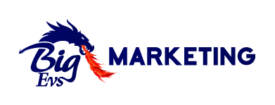If you are in the software industry, you have probably heard of product-led growth (PLG) by now. But what does it actually mean and why is it becoming so popular? In this blog post, we will explain the definition, benefits, and best practices of PLG, and how you can apply it to your own business.
What is Product-Led Growth?
Product-led growth (PLG) is a business strategy and methodology that relies on the product itself as the main way to acquire, engage, and retain customers. The product is highlighted at every stage of the buyer journey, with the goal of enabling users to self-educate, quickly get value, and share their positive product experience with others. PLG creates company-wide alignment across teams around the product as the largest source of sustainable, scalable business growth.
PLG often involves offering a free trial or freemium product to let customers experience the product before paying. For example, Slack lets users create a free workspace and invite their team members to collaborate. Dropbox gives users 2 GB of free storage space and encourages them to refer their friends for more. Calendly allows users to schedule meetings with anyone without exchanging emails.
Why is “Product-Led Growth” A Trending Concept?
We are in the middle of a massive shift in the way people use and buy software. Customers today have higher expectations, more choices, and less patience than ever before. They want software that is beautiful, intuitive, powerful, and affordable. They want to try before they buy, and they want to share their feedback and recommendations with others.
Factors that drive product-led growth are:
• The consumerization of B2B SaaS products: Users demand consumer-grade UX in their work tools, and they are more likely to adopt products that solve their pain points and delight them.
• The rise of self-service models: Buyers prefer to research and evaluate products on their own, without relying on salespeople or marketing campaigns. According to Forrester, nearly 75% of B2B buyers now say they’d rather buy through an app or website, rather than a salesperson.
• The importance of personalization: Customers expect products to adapt to their needs and preferences, and they are more loyal to brands that offer personalized experiences. Salesforce found that 52% of B2C customers would switch brands if they weren’t getting a personalized experience.
• The power of word-of-mouth: Customers trust their peers more than ads or reviews, and they are more likely to spread the word about products that they love. Referrals are one of the most effective ways to acquire new customers and increase retention.
These factors make traditional sales and marketing-led growth models less effective and more expensive. Instead of creating a need for the product by focusing on the promise of what the product can deliver, PLG focuses on delivering the promise by letting the product speak for itself.
How to Implement Product-Led Growth?
To succeed with PLG, you need to design your product with growth in mind. This means:
• Building a product that solves a real problem for your target audience:
You need to understand your customers’ pain points, goals, and motivations, and create a product that addresses them in a simple and elegant way.
• Offering a frictionless onboarding process:
You need to make it easy for users to sign up. It should be easy for them to get started, and achieve their desired outcomes with your product. You need to provide clear guidance, feedback, and support along the way.
• Optimizing for user activation:
You need to identify the key actions or features that indicate that users are getting value from your product, and encourage them to take those actions as soon as possible. Also, you need to measure and improve your activation rate over time.
More options:
• Providing a clear value proposition:
You need to communicate how your product can help users achieve their goals better than alternatives. Moreover, you need to highlight your unique selling points and differentiate yourself from competitors.
• Enabling user referrals:
You need to make it easy for users to invite others to use your product, and reward them for doing so. You need to leverage social proof, testimonials, ratings, reviews, case studies, etc., to showcase your product’s benefits.
• Experimenting with pricing models:
You need to find the optimal balance between offering enough value for free users to get hooked on your product. Give them enough incentives for them to upgrade to paid plans. Also, you need to test different pricing strategies, such as freemium, free trial, pay-as-you-go, etc.. What you decide will be based on what works best for your product.
• Aligning your teams around the product:
You need to ensure that your engineering, sales, marketing, and customer success teams are working together to deliver a consistent and delightful product experience. You need to establish clear goals, metrics, and feedback loops to monitor and optimize your product-led growth.
Conclusion
Product-led growth is not just a buzzword, it’s a proven way to grow your software business in today’s competitive and customer-centric market. By building a product that users love, trust, and recommend, you can reduce your acquisition costs, increase your conversion rates, and boost your retention rates.

